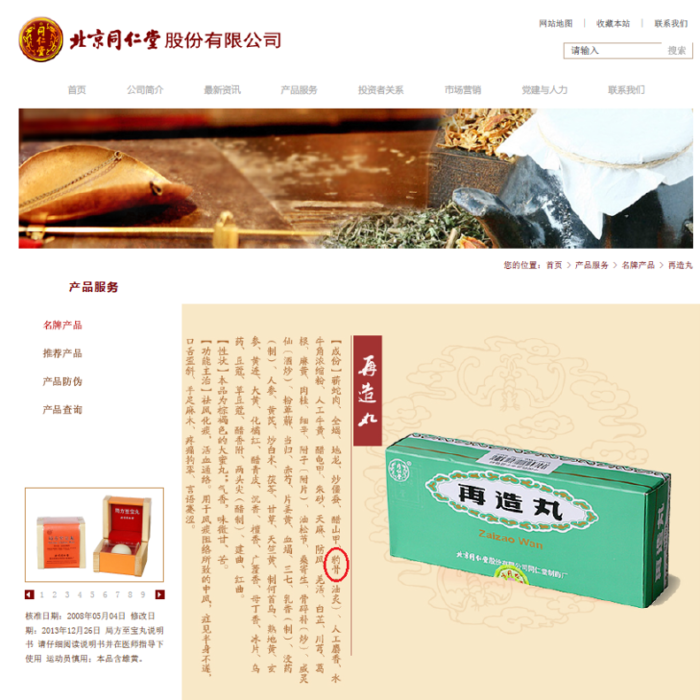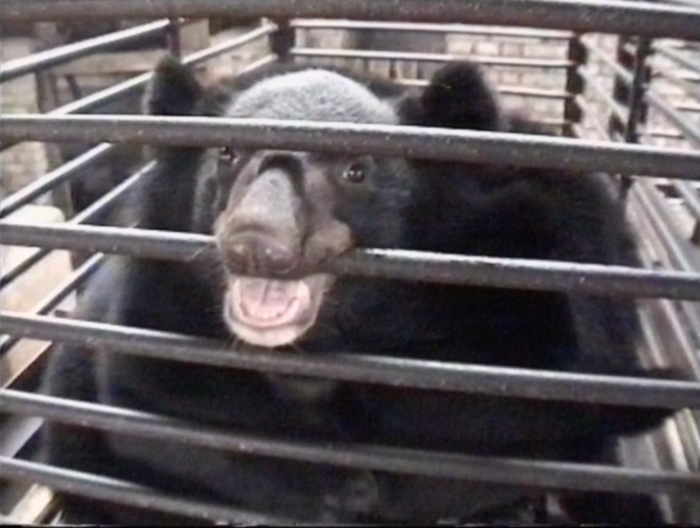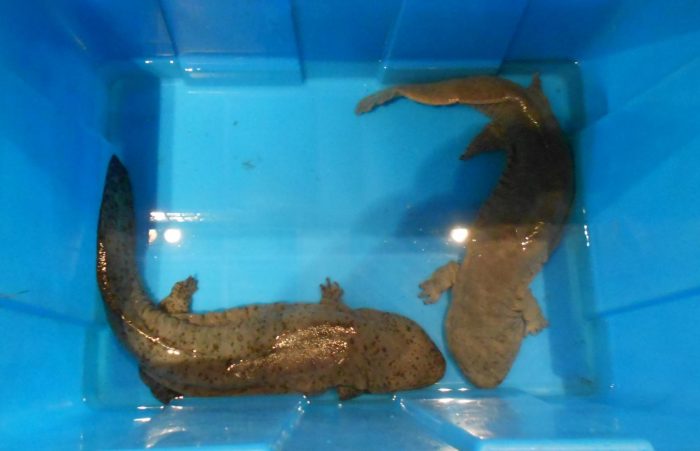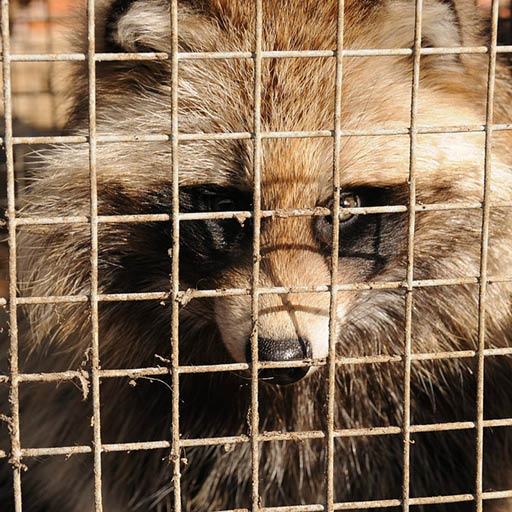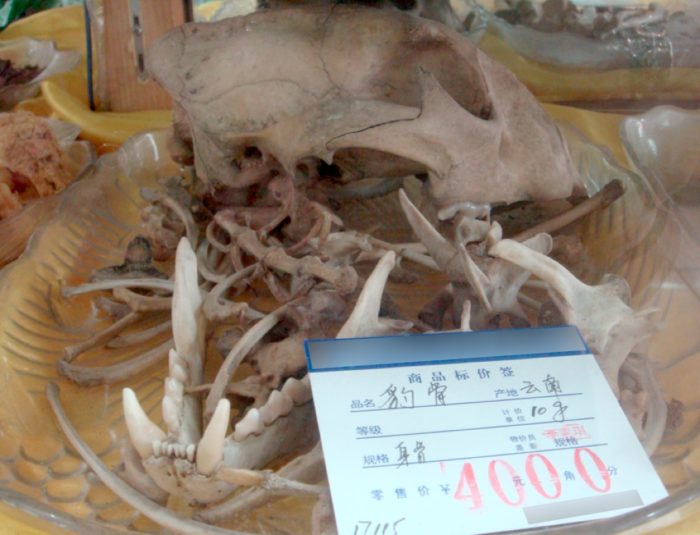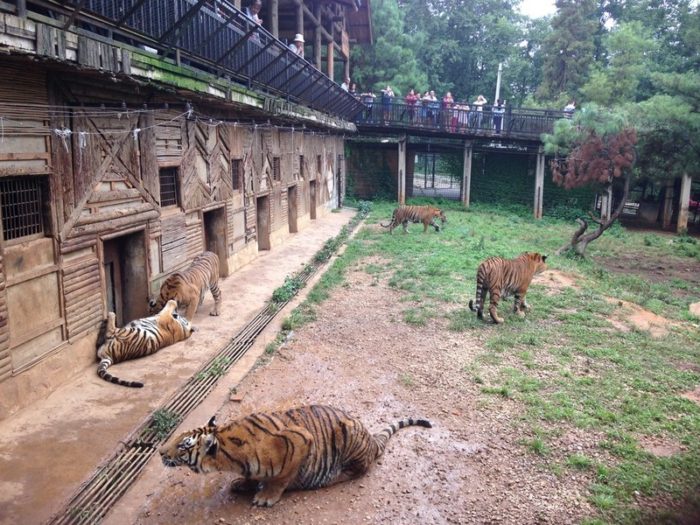China’s wildlife trade policy – where are we now and what might come next?
Since the start of 2020, we have seen some significant changes in China’s wildlife trade policy, with a flurry of new notifications and regulations from a number of different Government bodies.
While the primary impetus behind some of these developments was the suggested link between wildlife trade and the emergence of the coronavirus SARS-CoV-2, the impacts and implications of wildlife policy changes adopted in China and other countries this year should far outlast the current crisis.
Of course, all governments must address serious concerns about the role of official policies and/or ineffective enforcement in perpetuating trade in wildlife that poses a risk to biodiversity or human health. This issue is far from specific to China and must be addressed as part of a global shift away from a destructive and exploitative relationship with the natural world.
Given EIA’s long-standing focus on policies in China due to its relevance for our species of focus such as tigers and other Asian big cats, elephants, rhinos and pangolins, we have taken a look at where things stand today.
What potentially positive changes have been adopted, what major concerns remain and what might happen next?
China’s Wildlife Protection Law
To understand what has changed in 2020, we need first to understand what the policy had been. The Wildlife Protection Law of the People’s Republic of China (or, more precisely translated, the Wild Animal Protection Law, since it does not cover plants) is the country’s most important piece of legislation covering conservation of, and trade in, wild animal species.
The Wildlife Protection Law has long been controversial in that it endorses so-called “utilisation” of wildlife as well as its protection. While the law nominally covers all wild animal species, in practice the key operative language on hunting, breeding, trade and consumption is mostly concerned with protected species – for example, the Law only prohibits the trade in protected species for consumption as food; on trade in non-protected species, it simply states that proof of legal origin, such as a hunting or import permit, is required.
Mechanisms for the commercial breeding and trade of protected species are written into the text of the Law, which states that trade in and use of protected species where “necessary for scientific research, captive breeding, public exhibition or performances, heritage conservation or other special purposes” may be permitted.
However, we have documented how, in practice, these “special purposes” are interpreted to cover commercial trade in wild-sourced specimens of species subject to the highest levels of protection such as leopards for the purposes of traditional medicine.
January 2020: Government imposes temporary restrictions on wildlife trade
The first major change in wildlife trade policy after the emergence of the coronavirus in late 2019 came about on 26 January 2020, when three agencies – the State Administration for Market Regulation, the Ministry of Agriculture and Rural Affairs and the National Forestry and Grasslands Administration – jointly issued the “Notification regarding prohibition of trade in wildlife”.
This document stated that “until the epidemic situation is resolved nationwide” facilities keeping wildlife in captivity were required to quarantine, while “all business operations including agricultural produce markets, supermarkets, food and beverage sellers and online sales platforms shall strictly prohibit trade of wild animals in any form”.
Despite the ostensibly all-encompassing language of this (albeit temporary) ban on trade in wild animals, it was not clear what forms of wildlife trade were not covered. For example, what about auction of ivory artefacts? Did the temporary ban cover the manufacture of tiger, leopard or lion bone wine and its sale in shops or the premises of facilities holding big cats in captivity? It seemed not, with no action reported against such manufacturers.
February 2020: lawmakers ban breeding and trade of most terrestrial wildlife as food, but other forms of trade go unaddressed
Then on 24 February 2020, a set of ‘Decisions’ adopted by the Standing Committee of the National People’s Congress (NPC) prohibited the trade in most terrestrial wild animal species for the purposes of consumption as food. The NPC is the highest law-making body in China and can adopt decisions that will be in effect immediately.
Contrary to some media coverage, this was not a total ban on all wildlife trade. Only consumption as food was addressed, meaning that breeding and trade for non-food purposes – such as pets, ornamental items and traditional medicine – is not covered by the ban.
Indeed, the Decisions stated that “where there is a need to utilise wildlife for special purposes other than consumption as food, such as scientific research, medicine or display, this shall be subject to strict supervision and approval, quarantine and inspection in accordance with relevant national regulations”. So, business as usual in terms of those uses.
As such, the provisions of the Wildlife Protection Law, under which legal trade in pangolin scales, leopard bone and skins of captive-bred tigers is permitted – continue to apply for trade for non-food purposes; the medicinal use of the bile of black bears held in farms not only remains legal, but has even been encouraged through the inclusion of an injection that contains bear bile within treatments recommended by Government bodies for treating COVID-19.
Also importantly, the ban only applies to “terrestrial” wild animal species. Farming and trade in aquatic wild animal species as food, which may include turtles, frogs and the critically endangered Chinese giant salamander, appears unaffected.
Nonetheless, it should be noted that the February Decisions represent a significant divergence from the Wildlife Protection Law by banning commercial breeding and trade in (almost) all terrestrial wild animal species, not just protected species. This suggests that some Government agencies are prepared to take a far more precautionary approach to wildlife trade, with a recognition that the risks posed to biodiversity and human health can far outweigh more consumptive, money-making imperatives.
This policy must be implemented effectively and ethically, but significant questions remained on its release: what would happen to live animals held in farms and breeding facilities and how would their welfare be considered? How would the Government manage compensation and retraining for people who had invested in what had been legal wildlife breeding, with official encouragement?
Worryingly, after the release of the Decisions, Chinese state media reported comments from some law-makers and academics which argued for less stringent restrictions on wildlife trade. We remain concerned that such commentary in State media could indicate a pushback against the momentum for introducing more permanent and comprehensive restrictions on wildlife trade. A suggestion to redefine the term ‘wildlife’ in a way that could exclude captive-bred specimens of wild animal species is of serious concern because such an approach could undermine and complicate efforts to reduce demand and enforce restrictions, while potentially enabling the laundering of wild-caught specimens as captive-bred.
April 2020: Government encourages shift towards trading wildlife as medicine instead of food
A document published by the National Forestry and Grasslands Administration (NFGA) on 8 April 2020 gives some indication as to the approaches in implementing the February Decisions – and makes for disheartening reading for those in China and elsewhere who hope to see an end to the exploitation of wild animals for traditional Chinese medicine.
The document, from the central NFGA directed to provincial-level departments, suggests that where facilities are breeding wildlife which can no longer be traded as food “but for which there are legal non-food uses such as scientific research, medicinal use or exhibition,” permits should be issued to enable this and agencies should “guide and assist farmers to adjust and shift the direction of their production and trade”.
As to how wild animals bred for trade as food will be dealt with, the document lays out several options, including release into appropriate habitats in the wild in appropriate numbers if the species is native to China or hand them over to rescue or shelter organisations if the species is not native.
Of particular concern is the recommendation that “for those captive wild animals which have medicinal or ornamental value, [agencies should] expedite work relating to administrative permits and information platforms in accordance with the law and regulations to accelerate use of stock.”
This guidance relates only to those wild animal species which had – before late February – been bred legally as food, so is not immediately relevant for protected species such as tigers, pangolins, leopards or rhinos.
Which species might meet the criteria for a pivot towards supplying traditional medicine is not defined, although it may be relevant for animals such as snakes. Regardless, these indications that the NFGA is continuing to support the use of wild animals for traditional medicine – even potentially increasing such use by “accelerating use of stock” and encouraging breeding facilities to shift towards medicinal use – is a worrying sign that may risk undermining the ambition, coherence and precautionary nature of the Decisions to prohibit breeding and trade in wild animals for consumption as food.
April 2020: Ministry consults on which species can be classed as livestock, exempting them from bans
The February 2020 Decisions also referred to a list of species of which captive populations may be managed as livestock, thereby subject to regulations around livestock husbandry and exempt from the prohibition on breeding and trade as food.
The Ministry of Agriculture and Rural Affairs issued a draft of this list on 8 April 2020, with an accompanying call for comments until 8 May 2020.
This draft list included pig, cattle, zebu, water buffalo, domestic yak, gayal, sheep, goat, horse, donkey, camel, rabbit, chicken, duck, goose, turkey, pigeon, quail, sika deer, red deer, reindeer, alpaca, guineafowl, ring-necked pheasant, partridge, mallard, ostrich, rhea, emu, mink, silver fox, Arctic fox and racoon-dog.
The final four species were accompanied by a note stating “not consumption as food”. Chinese NGOs have expressed concern that the inclusion of species such as mallard and ring-necked pheasant could complicate law enforcement and enable laundering of wild-caught animals.
EIA, along with 32 other NGOs and experts from around the world, submitted comments on this document on 6 May, recommending that another list be issued specifying that wild animal species threatened by trade may not be commercially bred or traded for any purpose.
April 2020: Government suggests patents should not be issued for medicines containing rhino horn or tiger bone, but may be granted for those using other threatened species
Another draft Government document issued on 8 April – this time the National Intellectual Property Administration – touched on wildlife trade policy. The draft document provides guidance for consideration of patent applications relating to traditional Chinese medicine products and was published alongside a call for public comment.
We were pleased to note that the guidance specifically states patents should not be issued for products containing tiger bone and rhino horn. We were, however, disappointed by guidance suggesting patents which use “rare medicinal ingredients” which aren’t prohibited by the law may be granted, using the example of a formulation that uses musk.
We argue that any product derived from a wild animal species threatened by trade should meet the agency’s criteria of “inventions and creations that violate socially recognised ethical standards or hinder public interest” and should not be supported by the patenting mechanism.
This is especially pertinent given that China’s current laws and regulations do not prohibit the use of body parts of even seriously threatened species with no obvious sustainable legal source, such as leopards and pangolins.
EIA submitted comments to the consultation in English and Chinese.
April 2020: Consultation on state medical insurance – draft suggests medicines containing rare wildlife won’t be covered
More cause for optimism can be found in another draft regulation, the “Interim Measures for the Administration of Medicine under Basic Medical Insurance”, published by the National Healthcare Security Administration on 28 April, alongside a call for comment open until 12 May.
The document, which details regulations relating to China’s national basic medical insurance, specifies that medicines containing “nationally rare or endangered wild animal or plant ingredients” will not be covered under the basic insurance.
While only a draft at present, this provision is good news and indicates that support for use of threatened wildlife in traditional medicine is not consistent across all levels of Government.
We hope to see this language retained in the final document and urge lawmakers and other agencies to support a move away from use of threatened wildlife in traditional medicine through amendment to key laws and regulations.
EIA submitted comments to the consultation on 11 May
Provincial government notices implement ban on trade in terrestrial wildlife as food
Since the Decisions issued by the central NPC Standing Committee in February banning trade in most terrestrial wild animals as food, a suite of notifications have been issued by provincial-level governments to implement the Decisions.
While these largely reflect the content of the NPC Standing Committee Decisions, amending provincial regulations to specifically prohibit trade for the purposes of food, they vary in the severity of penalties laid out for violating these regulations. For example, the notification from Tianjin states that eating wild animals is punishable by a fine of two to 10 times the estimated value of the animal or animal product; the Guangdong notice, however, stipulates fines of two to 20 times the estimated value for protected species and one to five times for other wildlife.
Next steps – revision of the Wildlife Protection Law
In February 2020, it was announced that China’s Wildlife Protection Law would be revised this year, with the revision process added into the annual work programme for the National People’s Congress Standing Committee.
The annual meeting of the NPC, originally scheduled for March, will now start on 22 May. What this means for the timeline of the Wildlife Protection Law revision is not entirely clear, although it is possible a new draft law will be presented for discussion at the meeting.
Regardless, it is clear that a narrow window of opportunity remains for the NPC to make use of this current revision to prohibit commercial breeding of and trade in threatened wild animal species for any purpose – not just consumption as food.
In doing so, China’s lawmakers could consolidate the commendable precautionary approach to wildlife trade represented in the February NPC Standing Committee Decisions, ensure that China’s future wildlife trade policy is coherent and consistent in addressing the potential threats posed by trade in wild animals to biodiversity and public health and set the stage for a more successful meeting of the Convention on Biological Diversity (originally scheduled for October 2020 in China, now postponed) with a much-needed example of ambitious policy change.
Many wildlife advocates in China have long been calling for a shift in wildlife policy to permanently end the commercial use of threatened species. Since the renewed focus on risk of new diseases has turned a spotlight on trade and consumption of wildlife, many experts in China have urged lawmakers to adopt a far more precautionary approach to wildlife trade. Academics and NGOs have specifically called for the prohibition on trade in wild animals as food to be extended to traditional medicine.
EIA supports these efforts and urges lawmakers to amend the Wildlife Protection Law to comprehensively prohibit the commercial breeding and trade of threatened wild animal species for any purpose.
Read our detailed recommendations in English and in Chinese.



